7 Common SSDI Application Mistakes (And How to Avoid Them)
According to the Social Security Administration (SSA), approximately 65% of initial applications for Social Security Disability Insurance (SSDI) are denied, often due to avoidable mistakes. The truth is… the application process is not easy. Even small mistakes or omissions in the application can lead to delays, or even rejections.
In this article we’re going to discuss the seven most common mistakes made during the SSDI application process and provide advice to help you avoid them.
-
Not Understanding Eligibility Requirements
Mistake: Assuming you qualify without meeting the SSA’s criteria.
Why It Happens: Many applicants don’t realize that SSDI has strict eligibility rules, including work credits and medical severity requirements.
How to Avoid:
- Ensure you have enough work credits (generally 40 credits, with 20 earned in the last 10 years). Work credits are earned based on your income and how long you’ve worked. You can check your work credits by creating a my Social Security account at SSA.gov/myaccount.
- Confirm your condition is a “medically determinable impairment” that prevents you from working for at least 12 months or results in death. This means there is objective medical evidence showing what your impairments are, and that these impairments are diagnosed by acceptable medical sources.
The SSA denies many claims because applicants don’t meet the basic eligibility criteria. Before applying, review the SSA’s eligibility requirements on our “Am I Eligible For Disability Benefits?” Page.
-
Incomplete or Inaccurate Medical Documentation
Mistake: Failing to provide thorough medical evidence.
Why It Happens: Applicants often assume their doctor’s records are sufficient, but the SSA requires detailed, consistent documentation.
How to Avoid:
- Submit complete medical records, including:
- Doctor’s reports and treatment notes.
- Test results (e.g., blood tests, imaging, biopsies).
- Hospitalization records and surgery details.
- A detailed statement from your treating physician about your limitations and prognosis.
- Ensure all records are consistent and clearly demonstrate how your condition prevents you from working.
Incomplete or inconsistent medical records are a leading cause of SSDI denials. Request copies of your records and review them for accuracy before submitting your application.
-
Errors on the Application Form
Mistake: Providing incorrect or incomplete information.
Why It Happens: The SSDI application is lengthy and complex, leading to unintentional errors.
How to Avoid:
- Double-check all details, including:
- Dates of employment and medical treatments.
- Correct Social Security numbers for yourself and any dependents.
- Accurate descriptions of your symptoms and limitations.
- Use the SSA’s online application portal at SSA.gov/applyfordisability to ensure accuracy.
Even small errors can delay your application. Consider having a trusted friend, family member, or a company like Trajector review your application before submitting it.
-
Missing Deadlines or SSA Requests
Mistake: Failing to respond to SSA correspondence on time.
Why It Happens: Applicants often underestimate the importance of deadlines or lose track of SSA requests.
How to Avoid:
- Stay organized by creating a folder (physical or digital) for your SSDI application.
- Keep copies of everything you send to the SSA and note down important dates.
- Set reminders for deadlines and respond promptly to any SSA requests for additional information.
Missing a deadline can significantly delay your application or even result in a denial. Stay proactive and organized throughout the process.
-
Failing to Include a Doctor’s Statement
Mistake: Not submitting a detailed opinion from your treating physician.
Why It Happens: Many applicants assume their medical records are enough, but the SSA values a doctor’s professional opinion.
How to Avoid:
- Ask your doctor to provide a written statement explaining:
- Your diagnosis and symptoms.
- How your condition limits your ability to work.
- Your prognosis and expected duration of disability.
A well-written doctor’s statement can be a powerful piece of evidence. Make sure your doctor understands the SSA’s requirements and provides a thorough, detailed opinion.
-
Not Seeking Professional Help
Mistake: Navigating the SSDI process alone.
Why It Happens: Many applicants don’t realize how complex the process is or assume they can handle it themselves.
How to Avoid:
- Consider hiring a company that helps you navigate the disability claims process, especially if:
- Your claim is complex.
- You’ve already been denied.
- You’re feeling overwhelmed by the process.
Professional help can make a significant difference, especially during appeals. An experienced team can guide you through the process, help you meet critical deadlines, and improve your chances of approval.
-
Giving Up After a Denial
Mistake: Not appealing a denied claim.
Why It Happens: Many applicants feel discouraged after a denial and don’t realize that appeals are a normal part of the process.
How to Avoid:
- Remember, many applicants succeed on appeal. Follow the appeals process:
- Reconsideration: A fresh review by a different examiner.
- Hearing: Present your case before an administrative law judge.
- Appeals Council: Request a review if the hearing decision is unfavorable.
- Federal Court: File a lawsuit as a last resort.
Learn more about the appeals process at SSA.gov/appeals.
Contact Us for a Free Consultation
At Trajector Disability, our team of experts is ready to help you understand your possible benefits and lead you through your journey! Whether you’re seeking Social Security Disability Insurance (SSDI) or Supplemental Security Income (SSI), our experts are ready to assist you. Schedule a free consultation, and rest assured—you won’t be charged unless your claim is approved.


